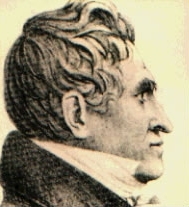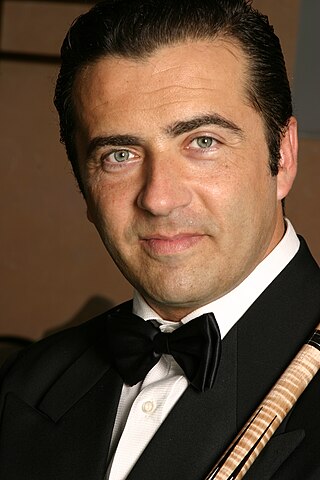
Cue sports are a wide variety of games of skill played with a cue, which is used to strike billiard balls and thereby cause them to move around a cloth-covered table bounded by elastic bumpers known as cushions. Cue sports are also collectively referred to as billiards, though this term has more specific connotations in some varieties of English.

Eight-ball is a discipline of pool played on a billiard table with six pockets, cue sticks, and sixteen billiard balls. The object balls include seven solid-colored balls numbered 1 through 7, seven striped balls numbered 9 through 15, and the black 8 ball. After the balls are scattered with a break shot, a player is assigned either the group of solid or striped balls once they have legally pocketed a ball from that group. The object of the game is to legally pocket the 8-ball in a "called" pocket, which can only be done after all of the balls from a player's assigned group have been cleared from the table.

Nine-ball is a discipline of the cue sport pool. The game's origins are traceable to the 1920s in the United States. It is played on a rectangular billiard table with pockets at each of the four corners and in the middle of each long side. Using a cue stick, players must strike the white cue ball to pocket nine colored billiard balls, hitting them in ascending numerical order. An individual game is won by the player pocketing the 9 ball. Matches are usually played as a race to a set number of racks, with the player who reaches the set number winning the match.

Straight pool, which is also called 14.1 continuous and 14.1 rack, is a cue sport in which two competing players attempt to pocket as many object balls as possible without playing a foul. The game was the primary version of pool played in professional competition until it was superseded by faster-playing games like nine-ball and eight-ball in the 1980s.
The Billiard Congress of America (BCA) is the governing body for cue sports in the United States and Canada, and the regional member organization of the World Pool-Billiard Association (WPA). It was established under this name in 1948 as a non-profit trade organization in order to promote the sport and organize its players via tournaments at various levels. The BCA is headquartered in Broomfield, Colorado. The voting members of the organization are mostly equipment manufacturers.

Carom billiards, also called French billiards and sometimes carambole billiards, is the overarching title of a family of cue sports generally played on cloth-covered, pocketless billiard tables. In its simplest form, the object of the game is to score points or "counts" by caroming one's own cue ball off both the opponent's cue ball and the object ball on a single shot. The invention as well as the exact date of origin of carom billiards is somewhat obscure but is thought to be traceable to 18th-century France.

Russian pyramid, also known as Russian billiards, is a form of billiards played on a large billiard table with narrow pockets. It is played across Russia and several former Soviet/Eastern Bloc countries. In the West, the game is known as pyramid billiards, or simply pyramid.

A billiard table or billiards table is a bounded table on which cue sports are played. In the modern era, all billiards tables provide a flat surface usually made of quarried slate, that is covered with cloth, and surrounded by vulcanized rubber cushions, with the whole thing elevated above the floor. More specific terms are used for specific sports, such as snooker table and pool table, and different-sized billiard balls are used on these table types. An obsolete term is billiard board, used in the 16th and 17th centuries.

Pool is a series of cue sports played on a billiard table. The table has six pockets along the rails, into which balls are shot. Of the many different pool games, the most popular include: eight-ball, blackball, nine-ball, ten-ball, seven-ball, straight pool, one-pocket, and bank pool. Eight-ball is the most frequently played discipline of pool, and it is often thought of as synonymous with "pool".

Ten-ball is a rotation pool game similar to nine-ball, but using ten balls instead of nine, and with the 10 ball instead of the 9 as the "money ball".

Three-cushion billiards, also called three-cushion carom, is a form of carom billiards. The object of the game is to carom the cue ball off both object balls while contacting the railcushions at least three times before contacting the second object ball. A point is scored for each successful carom. In most shots the cue ball hits the object balls one time each, although hitting them any number of times is allowed as long as both are hit. The cue ball may contact the cushions before or after hitting the first object ball. It does not have to contact three different cushions as long as it has been in contact with any cushion at least three times in total.

Five-pin billiards or simply five-pins or 5-pins, is today usually a carom billiards form of cue sport, though sometimes still played on a pocket table. In addition to the customary three balls of most carom games, it makes use of a set of five upright pins (skittles) arranged in a "+" pattern at the center of the table. The game is popular especially in Italy and Argentina, but also in some other parts of Latin America and Europe, with international, televised professional tournaments. It is sometimes referred to as Italian five-pins or Italian billiards, or as simply italiana. A variant of the game, goriziana or nine-pins, adds additional skittles to the formation. A related pocket game, with larger pins, is played in Scandinavia and is referred to in English as Danish pin billiards, with a Swedish variant that has some rules more similar to the Italian game.

A trick shot is a shot played on a billiards table, which seems unlikely or impossible or requires significant skill. Trick shots frequently involve the balls organized in ways that do not correspond to normal play, such as balls being in a straight line, or use props such as extra cues or a triangle that would not be allowed on the table during a game. As an organized cue sports discipline, trick shot competition is known as artistic pool.

The English-originating version of eight-ball pool, also known as English pool, English eight-ball, blackball, or simply reds and yellows, is a pool game played with sixteen balls on a small pool table with six pockets. It originated in the United Kingdom and is played in the Commonwealth countries such as Australia and South Africa. In the UK and Ireland it is usually called simply "pool".
The World Confederation of Billiards Sports (WCBS) is the international umbrella organization encompassing the major cue sports, including carom billiards, pool games of several varieties, and snooker.

Michael Massey, professionally known as Mike Massey, is an American professional pool player. From 1989 to 1991 he served as a contributing editor of The Snap Magazine. Massey was born in Loudon, Tennessee, and for several years lived in Chattanooga, Tennessee, where he owned a pool hall. He has the nickname of "Tennessee Tarzan", but he now lives in Midway, Utah.

Captain François Mingaud was an infantry officer in the French Army and a carom billiards player. He is credited as the inventor of the leather tip for a billiards cue, a "possibly not original idea" that he perfected while imprisoned in Bicêtre for political outspokenness. This revolutionized the game of billiards, allowing the cue ball to be finely manipulated by the application of spin.
Carom billiards and pool are two types of cue sports or billiards-family games, which as a general class are played with a stick called a cue which is used to strike billiard balls, moving them around a cloth-covered billiard table bounded by rubber cushions attached to the confining rails of the table.

Stefano Pelinga is an Italian professional pool player from Rome. He is best known as a multi-year international artistic pool champion, as both an individual and team captain. He has also served as an officer for the Polizia di Stato for 27 years, retiring from police work in 2011, then moving to Las Vegas, Nevada to play pool full-time. Pelinga has served as a board member of the International Artistic Poolplayers Association (IAPA). He was the featured player on the cover of the May 2010 issue of Billiards Digest magazine, which named him one of the world's best trick shot artists. He has been nicknamed "Mr. Trick Shots" and "Il Maestro". Aside from competition, Pelinga performs exhibitions, organizes competitions and raises funds for a variety of charitable organizations with his personal appearances. He was invited to tour in the USA with Paul Gerni, Norway's Lars Riiber, and Japan's Yoshikazu Kimura, and nominated by Paul Gerni for a spot on ESPN's Trick Shot Magic, where he has been featured for over ten years. He won two Trick Shot Magic events, in 2005 and 2007, after a few second places.
Andy Segal, nicknamed "the Magic Man", is a trick-shot pool champion from Huntington, New York. He began as a professional nine-ball player in the 1990s, and was a regular on the Camel Pro Billiard Tour before switching to trick-shot competition in 2002. A full-time pro player since 2007, Segal holds four world records in artistic billiards. He is known for his television competition appearances on ESPN, and has won many such events, including Trick Shot Magic, the World Cup of Trick Shots, the WPA World Artistic Pool Championship, and the Masters Artistic Pool Championship. Segal also performs trick shot exhibitions all over the world, and in films and television.

















